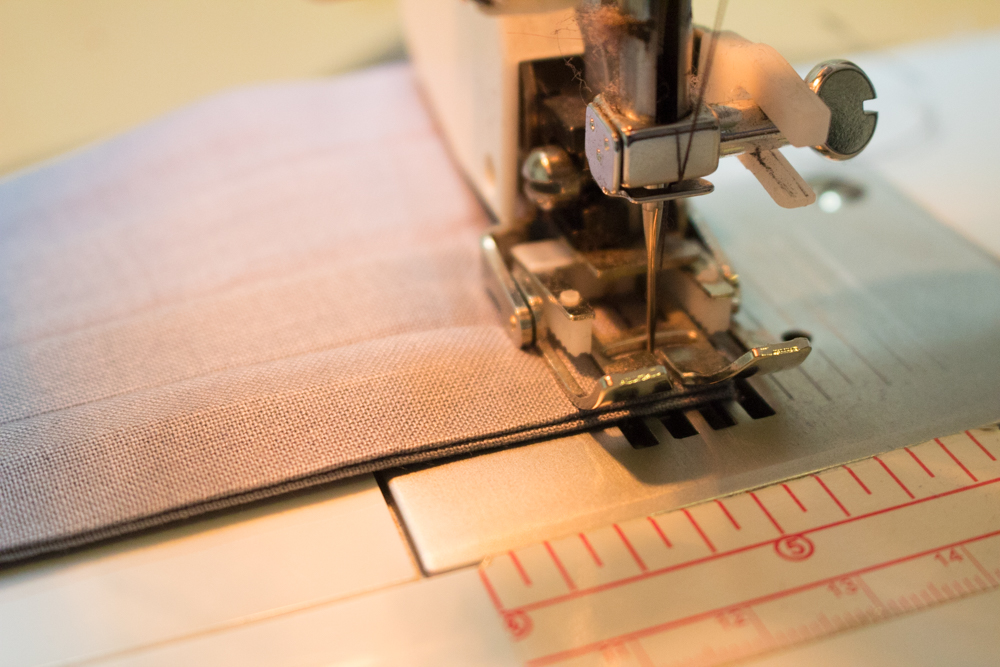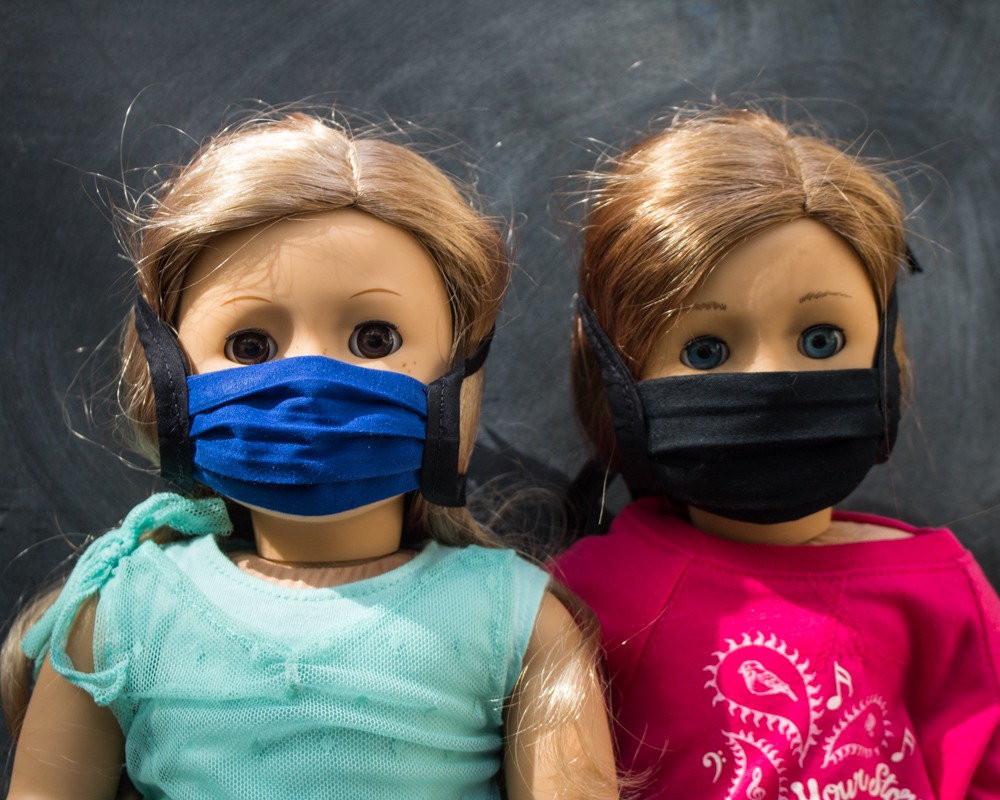The only thing that hurts my pandemic-sore heart more than seeing a child's doll in a face mask is seeing that child, herself, in one:
But if they've got to wear them, they're going to be as sturdy and well-sewn as I can make them, and as close to as exactly what the children want as I can manage.
I don't know if I've ever spent that much time getting a pattern absolutely, exactly right. It's an improvement even over the
elastic face masks that I was also super happy with, until the elastic started bothering my ears and I decided that the side seams needed more of a finished look.
As usual, bias tape to the rescue! These face masks with bias tape ties aren't quite as grab-and-go as the elastic ones, but even so, tying the ties only takes a few seconds, and these masks are much more forgiving in fit. Syd, for instance, had to have my original elastic band mask adjusted to fit her, but she can easily wear these bias tape face masks in both the Big Kid size, which is that hot pink mask she's modeling in these photos, and the Adult size, which is what I actually sewed for her.
Black on black, of course.
Will is, in fact, modeling her own mask, sewn in the exact colors she requested, and here's HER doll's matching mask:
Sisters!
It can be tricky to make proportions look correct in doll sizes, so I'm pleased that the bias tape that I'm using looks good with both human and doll masks--
--and since I'm working only in solid colors, not patterns, I don't have to worry about prints looking oversized on the dolls.
Here's my assistant and costume designer at work:
And then I snookered Matt into modeling my Adult mask, grey on navy, and additionally snookered him into letting Syd gel his hair for the photos:
I sew the
human face masks, also available in custom colors in my Pumpkin+Bear shop, in three sizes, to better fit all the humans I can think of. I've got Adult masks--
--Big Kid masks that I think should work for most kids ages 7-12 (and older, as you can see!)--
--and Little Kid masks that I think should fit most kids who are old enough to wear a mask through at least age seven:
My etsy listings include all of my exact measurements, though, and so whenever possible, I recommend that you measure your human first.
I'm sewing all of my masks, human and doll, as custom orders, which means that when you order you can pick the exact color of bias tape (a poly/cotton blend)--
--and exact color of mask fabric (100% cotton):
The bias tape and fabric match closely, so you can go completely monochrome if you want, but the mask is double-sided (and reversible!), and there are two sets of bias tape ties, so if you want a different color for everything, that's a totally reasonable jam and I'll make it for you.
My other new listing is completely unrelated to the pandemic--whee! I was looking through some photos of busy summers back in the Before-Times, and I found a whole photo shoot that I did with Syd while
Will was at Space Camp one summer. We had a birthday party for her dolls, wherein she baked and frosted a doll-sized cake, and I made a rainbow of doll-sized candles for it:
It was magical:

Is it possible that I did not understand at the time what a precious and small fairy child I had? I can't have possibly treasured enough my time with this magical little creature. I mean, you guys. She made a TINY BIRTHDAY CAKE. FOR HER DOLLS. AND THEN SERVED IT TO THEM ON DOLL-SIZED DISHES.
I can't even.
A friend and I have this shared fantasy, in which time travel is invented, and we each go back to find ourselves on some hard day we were just about to have with two very young children. You know, one of those days that just dragged on, where the kids kept wanting books read to them and getting all their clothes dirty and you'd trek outside with them to the sandbox and then back in for a snack, get out the play dough and then read fourteen books, tromp them all to the park and then back home for some coloring, and you'd look at the clock to see if it was maybe almost time for your co-parent to get home and see that it was something like 10:00 am and sigh and make another snack.
So, we're each going to show up at our old houses on one of these mornings, and our old selves will of course recognize us, because we're US, just old, and we'll tell our young selves to take the day off, have a nap, order a pizza and eat it while reading a book, etc. And they'll go off to do that, having no problem leaving their kids with us--because, you know, it's US--and we will spend that long, tedious day absolutely treasuring the chance to be with those precious and small fairy children again. We'll read them picture books! And change their tiny little clothes! Dig with them in the sandbox! Make them a plate of cheese cubes and strawberries! It's a win-win situation, ideally to be repeated weekly.
Until time travel is invented, I guess old photographs will have to do.



















































